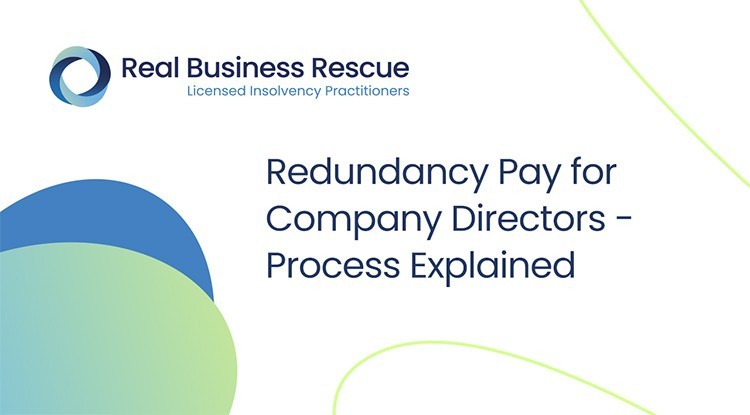Checking Out the Interplay In Between Firm Redundancy and Organizational Flexibility for Future Development
In the vibrant landscape these days's service globe, the elaborate partnership between firm redundancy and organizational versatility becomes a critical element for continual growth and success. Business often deal with the obstacle of striking a fragile balance in between keeping a level of redundancy to alleviate threats and fostering versatility to react swiftly to the ever-evolving market needs. This fragile interplay holds the essential to not just surviving in rough times however additionally thriving when faced with unpredictability. As we explore the multifaceted dimensions of this interaction, fascinating insights into exactly how companies navigate these complexities to lead the way for future development wait for.
Importance of Company Redundancy
Company redundancy is an important aspect that improves organizational resilience and reduces operational threats. By including redundancy actions within the organizational framework, firms can much better stand up to unanticipated interruptions and changes in the company environment. Redundancy functions as a calculated buffer, allowing companies to adjust and respond efficiently to unexpected obstacles without jeopardizing important operations.
One trick element of the significance of company redundancy is its duty in making sure continuity throughout times of dilemma. When faced with abrupt adjustments or emergency situations, redundant systems, sources, or workers can step in to keep important functions and prevent prevalent disruptions. This connection not only safeguards the firm's track record and customer trust fund yet likewise minimizes monetary losses and operational downtime.

Strategies for Organizational Adaptability

Producing adaptable organizational frameworks that permit for quick changes to market characteristics and client needs is important for remaining affordable in a quickly evolving setting. By proactively recognizing prospective interruptions and opportunities, organizations can proactively thrive and adjust in an ever-changing service landscape.
Balancing Redundancy and Flexibility
Achieving a harmonious stability in between operational redundancy and organizational flexibility is extremely important in navigating the see here now complexities of a vibrant organization environment. Striking the best equilibrium in between redundancy and adaptability is a delicate procedure that calls for a deep understanding of the company's objectives, industry dynamics, and threat tolerance.
To accomplish this balance, firms need to conduct normal assessments of their procedures to identify locations where redundancy is necessary for risk reduction and where flexibility can drive technology and growth. Implementing flexible frameworks, cultivating a society of constant discovering and enhancement, and encouraging open communication throughout all degrees of the company are key methods to integrate redundancy and flexibility successfully. By lining up these two crucial elements, firms can place themselves for sustainable development and success in an ever-changing business landscape.
Study on Adaptation Success
In analyzing circumstances of effective organizational adjustment, it ends up being apparent that the interaction in between functional redundancy and adaptability is a defining consider forming resilient businesses. One engaging study is that of Netflix. At first a DVD rental solution, Netflix demonstrated remarkable flexibility by transitioning into a streaming platform when digitalization interfered with the industry. By purposefully investing in technology and material creation, Netflix not just survived however thrived in a rapidly advancing market. Another standout instance is Amazon. Starting as an on the internet book shop, Amazon constantly adjusted its business design, expanding into diverse industries such as cloud computing and expert system. This adaptability enabled Amazon to remain ahead of competitors and satisfy changing customer needs. Lastly, Adobe offers a significant illustration of successful adjustment. The firm shifted from offering software program licenses to a subscription-based version, making sure reoccuring income streams and improved consumer involvement. These study highlight the value of functional redundancy coupled with organizational versatility in promoting long-term growth and competitiveness.
Building Resilience for Future Development
Building strength for future growth requires a calculated alignment of functional processes with market characteristics and arising patterns. Firms should adjust to altering advice settings by promoting a society of flexibility, technology, and continuous renovation.
Furthermore, cultivating strong connections with stakeholders, such as consumers, workers, distributors, and the community, is crucial for maintaining and weathering unpredictabilities trust and support throughout stormy times. Effective communication and openness play a vital function in structure strength, as they help line up assumptions and facilitate cooperation in navigating uncertainties.
Moreover, companies require to focus on learning and advancement efforts to upskill staff members and outfit them with the necessary tools to adapt to altering scenarios. By purchasing their labor force, companies can enhance their adaptability and agility, eventually enhancing their durability for lasting future development.
Verdict

In the dynamic landscape of today's organization globe, the complex relationship in between company redundancy and organizational versatility emerges as a critical variable for sustained growth and success. Business often deal with the obstacle of striking a fragile balance between preserving a degree of redundancy to mitigate risks and promoting flexibility to react quickly to the ever-evolving market needs.To achieve this balance, firms require to conduct regular evaluations of their operations to determine locations where redundancy is essential for risk mitigation and where adaptability can drive advancement and development.In verdict, the interplay in between business redundancy and business flexibility is crucial for future growth. Building resilience through a combination of redundancy and adaptability will ensure that companies are prepared for the challenges of the future.